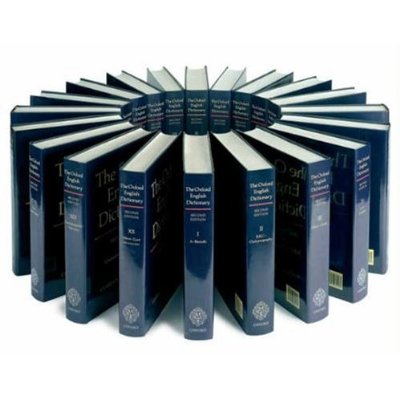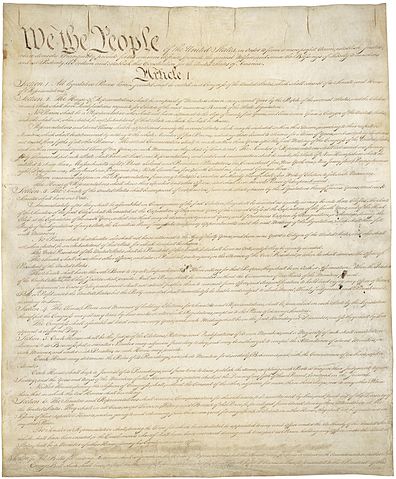Salafism, often referred to as ‘Wahhabism’, is widely regarded as a fundamentalist interpretation of Islam that fuels Jihadism and subjugates women. Some even lump ISIS and Salafism together—casting suspicion upon the thousands of Muslims who identify as Salafi in the West. After gaining unprecedented access to Salafi women’s groups in London, I discovered the realities behind the myths.
The post 6 common misconceptions about Salafi Muslims in the West appeared first on OUPblog.
By Lynne Murphy
For 20 years, 14 of those in England, I’ve been giving lectures about the social power afforded to dictionaries, exhorting my students to discard the belief that dictionaries are infallible authorities. The students laugh at my stories about nuns who told me that ain’t couldn’t be a word because it wasn’t in the (school) dictionary and about people who talk about the Dictionary in the same way that they talk about the Bible. But after a while I realized that nearly all the examples in the lecture were, like me, American. At first, I could use the excuse that I’d not been in the UK long enough to encounter good examples of dictionary jingoism. But British examples did not present themselves over the next decade, while American ones kept streaming in. Rather than laughing with recognition, were my students simply laughing with amusement at my ridiculous teachers? Is the notion of dictionary-as-Bible less compelling in a culture where only about 17% of the population consider religion to be important to their lives? (Compare the United States, where 3 in 10 people believe that the Bible provides literal truth.) I’ve started to wonder: how different are British and American attitudes toward dictionaries, and to what extent can those differences be attributed to the two nations’ relationships with the written word?
Our constitutions are a case in point. The United States Constitution is a written document that is extremely difficult to change; the most recent amendment took 202 years to ratify. We didn’t inherit this from the British, whose constitution is uncodified — it’s an aggregation of acts, treaties, and tradition. If you want to freak an American out, tell them that you live in a country where ‘[n]o Act of Parliament can be unconstitutional, for the law of the land knows not the word or the idea’. Americans are generally satisfied that their constitution — which is just about seven times longer than this blog post — is as relevant today as it was when first drafted and last amended. We like it so much that a holiday to celebrate it was instituted in 2004.
Dictionaries and the law
But with such importance placed on the written word of law comes the problem of how to interpret those words. And for a culture where the best word is the written word, a written authority on how to interpret words is sought. Between 2000 and 2010, 295 dictionary definitions were cited in 225 US Supreme Court opinions. In contrast, I could find only four UK Supreme court decisions between 2009 and now that mention dictionaries. American judicial reliance on dictionaries leaves lexicographers and law scholars uneasy; most dictionaries aim to describe common usage, rather than prescribe the best interpretation for a word. Furthermore, dictionaries differ; something as slight as the presence or absence of a the or a usually might have a great impact on a literalist’s interpretation of a law. And yet US Supreme Court dictionary citation has risen by about ten times since the 1960s.
No particular dictionary is America’s Bible—but that doesn’t stop the worship of dictionaries, just as the existence of many Bible translations hasn’t stopped people citing scripture in English. The name Webster is not trademarked, and so several publishers use it on their dictionary titles because of its traditional authority. When asked last summer how a single man, Noah Webster, could have such a profound effect on American English, I missed the chance to say: it wasn’t the man; it was the books — the written word. His “Blue-Backed Speller”, a textbook used in American schools for over 100 years, has been called ‘a secular catechism to the nation-state’. At a time when much was unsure, Webster provided standards (not all of which, it must be said, were accepted) for the new English of a new nation.
American dictionaries, regardless of publisher, have continued in that vein. British lexicography from Johnson’s dictionary to the Oxford English Dictionary (OED) has excelled in recording literary language from a historical viewpoint. In more recent decades British lexicography has taken a more international perspective with serious innovations and industry in dictionaries for learners. American lexicographical innovation, in contrast, has largely been in making dictionaries more user-friendly for the average native speaker.

The Oxford English Dictionary, courtesy of Oxford Dictionaries. Do not use without permission.
Local attitudes: marketing dictionaries
By and large, lexicographers on either side of the Atlantic are lovely people who want to describe the language in a way that’s useful to their readers. But a look at the way dictionaries are marketed belies their local histories, the local attitudes toward dictionaries, and assumptions about who is using them. One big general-purpose British dictionary’s cover tells us it is ‘The Language Lover’s Dictionary’. Another is ‘The unrivalled dictionary for word lovers’.
Now compare some hefty American dictionaries, whose covers advertise ‘expert guidance on correct usage’ and ‘The Clearest Advice on Avoiding Offensive Language; The Best Guidance on Grammar and Usage’. One has a badge telling us it is ‘The Official Dictionary of the ASSOCIATED PRESS’. Not one of the British dictionaries comes close to such claims of authority. (The closest is the Oxford tagline ‘The world’s most trusted dictionaries’, which doesn’t make claims about what the dictionary does, but about how it is received.) None of the American dictionary marketers talk about loving words. They think you’re unsure about language and want some help. There may be a story to tell here about social class and dictionaries in the two countries, with the American publishers marketing to the aspirational, and the British ones to the arrived. And maybe it’s aspirationalism and the attendant insecurity that goes with it that makes America the land of the codified rule, the codified meaning. By putting rules and meanings onto paper, we make them available to all. As an American, I kind of like that. As a lexicographer, it worries me that dictionary users don’t always recognize that English is just too big and messy for a dictionary to pin down.
A version of this article originally appeared on the OxfordWords blog.
Lynne Murphy, Reader in Linguistics at the University of Sussex, researches word meaning and use, with special emphasis on antonyms. She blogs at Separated by a Common Language and is on Twitter at @lynneguist.
Subscribe to the OUPblog via email or RSS.
Subscribe to only language articles on the OUPblog via email or RSS.
The post How do British and American attitudes to dictionaries differ? appeared first on OUPblog.


Fun with Bible interpretation along with cartoon style, etc.
 Bright Gems for His Crown,
Bright Gems for His Crown,
93 Devotionals to Help Build Qualities of Character in Children.
by Maxine Randall
"This book is designed to help elementary and junior young people love and live for Christ now, and to develop qualities of character that will help them shine for Him. The title is inspired by the much loved hymn for children which is entitled "When He Cometh," written by William O. Cushing about a century and a half ago. The devotionals are in the format of 31 biblical truths and character traits, one for each day of the month. Each daily truth/trait is repeated for 3 months, with a different devotional for each month. They can be started any month of the year; months may be skipped in between, etc. Each devotional has a scripture text, a title, a brief meditation on the topic at hand, and a sentence or question requiring an immediate response. Then there is an optional activity for each devotional, which is to be done later in the day. Many of these activities are geared to encourage parental input."

2.5 x 3.5
Polychromo Walnut Brown on PAPER
ebay
I bought some Rives BFK print paper last time I was at the store, and thought I'd better try it!
This is a HUGE departure from my usual illustration board. HUGE I tell you.
I've always loved illustration board for its durablility (doesn't crease easily, its more sturdy) and versatility (you can use all kinds of media on it).
But you can't see through it. That's a major drawback. It makes it really hard to transfer finished drawings, especially for colored pencil work (if you do the usual "lay the drawing down on top and trace over it to transfer it" it leaves a groove in the board, no matter how light a pressure you use, and that's not a good thing for pencil work.)
What I've been doing with the board is this labor-intensive "scan the drawing, clean it up in Photoshop, then print it out really really really really light onto the board with my Epson 2200 printer".
Well, that works, but its kind of a drag. And the printer only goes 13" wide, so if your board is wider than that, then what do you do? You can see the problem. (Except for all of these little pieces ~ I just draw them freehand directly onto the board. I'm talking about more involved illustrations.)
So this paper works with a lightbox. YAY!
And I like the paper. Not as well as the board, but its OK. It doesn't take many layers of pencil. I think it will be good for this monochromatic kind of work where I don't have to do too many layers anyway. But I think for really heavy handed many-colored and layered kinds of work, it wouldn't hold up.
The paper is soft and lovely, but that's the problem. The tooth squishes down too fast (if you do colored pencil you know what I mean by that.)
The other interesting thing is that the Walnut Brown color looks different than it does on illustration board.

Do you see the difference? It looks softer on the paper, and it also doesn't go quite as dark.
I used cream colored paper ~ I think. I know that sounds stupid. I remember there was a grey (which I didn't want) and this. I know they make both white and cream, and I'm pretty sure what I have here is the cream. I guess I get to go back to the store and check, or order some white from online someplace. (I've already searched online, and when looking at the little color swatches of both colors, what I have here actually looks like something in between the two, which is no help at all!)
Remember when art was easy? You just had your little box of crayons and some construction paper?
To see all the Yarn pieces in this series side-by-side, please go here. Or visit my ebay store to see which are available for sale.
All images and content herein are © Paula Pertile and may not be used or reproduced without permission.










Beautiful. These are the words to the chorus in one of my favorite hymns. Thanks for sharing.